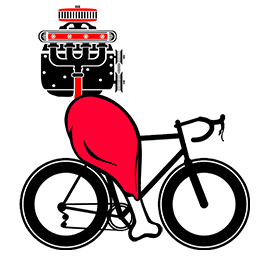This study examined the relationship between pedaling technique during intense cycling and the ability to maintain a supramaximal cadence, defined as an ultra-high pedaling rate of 160-220 revolutions per minute (rpm), for 30 seconds. Fifteen competitive cyclists and 13 recreational cyclists participated. During one test, cyclists rode at 80% of their maximum oxygen uptake and 90 rpm to simulate the technique used during competitions. In a separate supramaximal cadence test, cyclists aimed for 160-220 rpm for 30 seconds while applying a light force.
The study found that competitive cyclists had a 48% index of force effectiveness during the competition simulation, higher than the 32% in recreational cyclists. Competitive cyclists also reached higher maximum cadences, averaging 216 rpm versus 192 rpm. There was a moderate correlation between force effectiveness and maximum cadence overall. However, maximum cadence correlated with force effectiveness in recreational cyclists but not competitive cyclists.
This study suggests pedaling technique during intense cycling relates to the ability to maintain very high cadences. Recreational cyclists can potentially gauge their pedaling technique by measuring their maximum cadence, without needing expensive equipment. To improve cycling performance, recreational cyclists should work on pedaling smoothly and effectively, especially during high-intensity intervals. This can be achieved through deliberate practice of pedaling at varying high cadences, focusing on applying force throughout the entire pedal stroke in a circular motion. Monitoring maximum cadence during supramaximal interval training can provide feedback on improvements in pedaling technique, which should increase over time with targeted training. Competitive cyclists already have excellent pedaling technique, so further improvements require other advanced training methods.
STUDY ABSTRACT BELOW
Published in Frontiers in Sports and Active Living
Citations: 0
2022
Abstract
This study aimed to examine the relationship between the pedal force application technique under a specific competitive condition and the ability to perform steady-state pedaling at a supramaximal cadence during a special pedaling test. A total of 15 competitive male cyclists and 13 active, healthy men (novice cyclists, hereafter, novices) performed the pedaling technique test. The test imitated a road cycling competition condition (80% VO2 peak and a cadence of 90 rpm). Additionally, they performed a supramaximal cadence test that evaluated the ability to perform steady-state pedaling for an ultra-high cadence (range of 160–220 rpm) of 30 s stably with a 0.1 kgf. For the pedaling technique test, kinetic data were obtained by the pedal-shaped force platform at 1,000 Hz, and the pedaling technique was determined by the index of force effectiveness (IFE). For the supramaximal cadence test, kinematic data were obtained using a motion capture system at 200 Hz. The supramaximal pedaling cadence (Cmax) was determined by measuring exercise time and targeted pedaling cadence. The IFE was 48.0 ± 9.7% in cyclists and 32.0 ± 5.9% in novices. The Cmax was 215.5 ± 8.8 rpm in cyclists and 192.2 ± 13.0 rpm in novices. These values were significantly higher for cyclists than for novices. Cmax was moderately correlated with IFE (r = 0.64). No significant correlation was observed between Cmax and IFE for cyclists only; in contrast, a moderate correlation was observed between these parameters for novices only (r = 0.67).
In conclusion, the pedal force application technique under a specific competitive condition is related to the ability to perform steady-state pedaling for supramaximal cadence during the test. Therefore, Cmax may be able to explain pedal force application techniques without the need for expensive devices for novices.
Authors
Y. Yamaguchi, M. Otsuka, Kohei Watanabe

Jordan Fowler has experience as a head swimming coach of the Frisco Swim Team, a TAAF-awarded coach, a track and field distance running consultant for select Texas High School runners, and has competed as a triathlete, road runner, and cyclist. Though he is remarkably slower than he was in his 20s and 30s, he still enjoys endurance sports and sports science studies.
